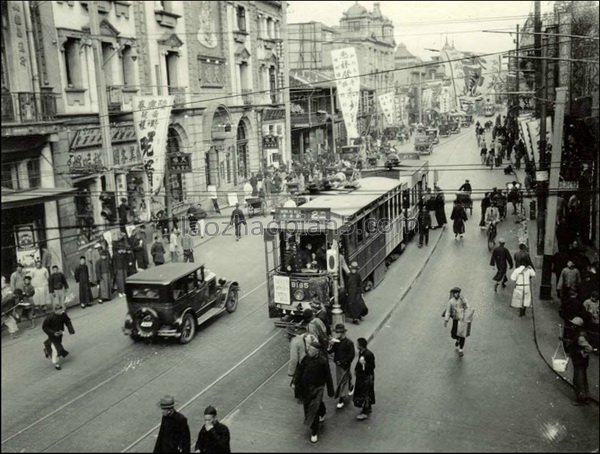On January 4, 1909, an American geologist, Zhang Bolin, and his son, Luo Lin, set out from Chicago and arrived in Shanghai on February 2 of the same year. During his stay in China, Zhang Bolun and his son successively visited 13 provinces including Jiangsu, Guangdong, Guangxi, Hubei, Sichuan, Henan, Zhili, Shanxi, and took more than 600 photos recording the social life of the late Qing Dynasty, which were later summarized into a photo album in 1909=“ http://www.laozhaopian5.com/jingdian/1891.html “target=”_ Blank “>Zhang Bolin’s Collection of Chinese Photography 。
All the old photos are previewed by time line and region. See: http://www.laozhaopian5.com/jingdian/1891.html
The following photos were taken by the delegation during its stay in Nanjing (February 8-10, 1909):
At noon on February 8, 1909, the delegation came fromShanghaitook the train and arrived at Nanjing Station at 8:11 pm. Duanfang, the governor of Liangjiang, sent his staff to meet them. The delegation took the governor’s special bus to the governor’s office. Afterwards, the delegation attended the welcome dinner prepared for them by Duanfang, which was mainly accompanied by returned students from the United States and some gentlemen. Most of them were bird’s nest soup, shark’s fin and other Chinese delicacies, but they were served with western tableware and drank wine. The banquet ended Later, he liked to collect jade and bronze, and showed his collection to Luo Lin
On the morning of February 9, Luo Lin recalled Duanfang’s visit to them, and personally checked their beds to see if they were satisfied with the care. This shows that he attached great importance to the American delegation. During the formal meeting, the members of the delegation wanted to know why China could maintain stability for a long time? Duanfang answered that people are patriotic and filial
Since the mission is mainly about education, they told Duan Fang that there are three ways to establish educational institutions: 1. Jointly with the Chinese government. 2. Independent of the Chinese government but subject to its laws. 3. Cooperate with church schools. Duanfang strongly opposed the third kind. He believed that religion could not be enforced, but could only be chosen by students themselves. In missionary schools, students could not inherit Chinese ideas without learning Chinese classics. He thinks the first is the best
![图片[1]-Zhang Bolin’s Chinese Photography Collection in 1909 (3) Nanjing-China Archive](https://chinaarchive.net/photo/qing-dynasty/1-210309205203.jpg)
2月9日,考察团一行参观了南京的古迹,这张照片是罗林登上北极阁所拍摄的南京风光,经历了太平天国等战乱,南京城还是有些萧瑟之意。
![图片[2]-Zhang Bolin’s Chinese Photography Collection in 1909 (3) Nanjing-China Archive](https://chinaarchive.net/photo/qing-dynasty/1-210309205204.jpg)
![图片[3]-Zhang Bolin’s Chinese Photography Collection in 1909 (3) Nanjing-China Archive](https://chinaarchive.net/photo/qing-dynasty/1-210309205204-50.jpg)
玄武湖风光,明城墙依然雄伟,城内城外人烟稀少。
![图片[4]-Zhang Bolin’s Chinese Photography Collection in 1909 (3) Nanjing-China Archive](https://chinaarchive.net/photo/qing-dynasty/1-210309205204-51.jpg)
南京明城墙,直接与山崖相接,远方的山上植被稀落,城墙下也只见几户人家。
2月10日,考察团参观了南京的师范学校,当晚要坐火车前往上海吴淞口,搭乘去香港的轮船,临别前,端方举行了盛大的告别宴会。





![[Qing Dynasty] British female painter—Elizabeth Keith, using woodblock prints to record China from the late Qing Dynasty to the early Republic of China—1915-China Archive](https://chinaarchive.net/wp-content/uploads/2022/11/image-191x300.png)